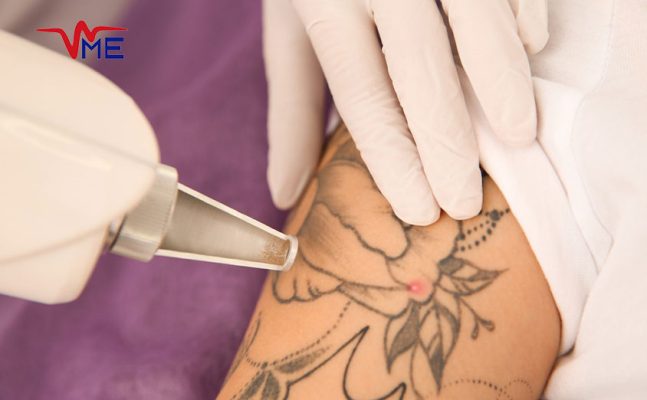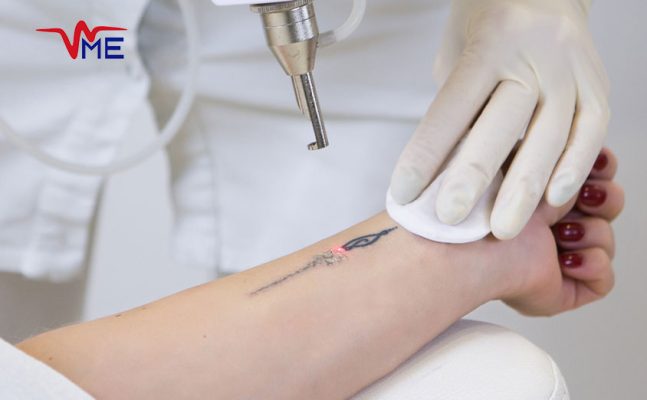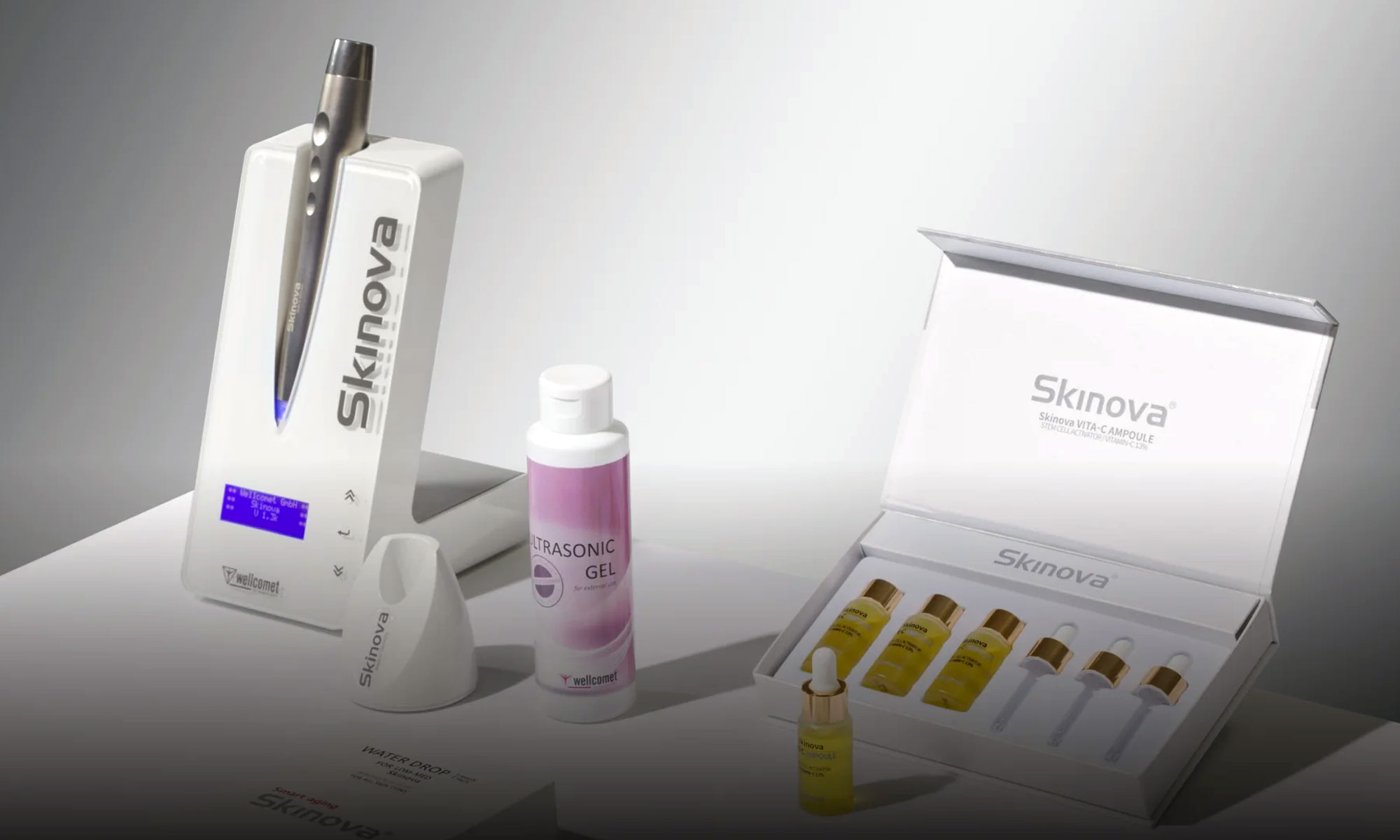LDM Triple
Minimally Invasive Laser Solutions for Tattoo Removal
Laser tattoo removal works by directing highly concentrated pulses of light into the tattooed area. The laser emits specific wavelengths that target the pigments in the tattoo ink. Different colors of ink absorb different wavelengths of light, which is why multiple sessions are often required to fully remove a tattoo, especially if the tattoo contains a variety of colors.
Once the laser light is absorbed by the ink particles, they are shattered into smaller fragments. Over the course of several weeks, the body’s immune system recognizes these fragments as foreign particles and gradually eliminates them through the lymphatic system. Since the laser targets only the ink, the surrounding skin tissue remains largely unaffected, which is one of the reasons laser tattoo removal is considered minimally invasive.
Types of Tattoos Treated by Laser
Laser tattoo removal is effective on a wide range of tattoo types and colors. However, some tattoos respond better to treatment than others. The factors that influence how well a tattoo can be removed include the age of the tattoo, the ink color, the depth of the ink in the skin, and the location of the tattoo on the body.
- Black and Dark-Colored Tattoos: Black ink is the easiest to remove because it absorbs all wavelengths of light. Darker colors like navy, green, and brown are also relatively easy to treat.
- Colored Tattoos: Bright colors, such as red, orange, and yellow, can be more challenging to remove because they don’t absorb all wavelengths as efficiently. However, with advanced laser technologies, these colors can still be effectively treated.
- Older Tattoos: Older tattoos tend to be easier to remove than newer ones because the ink has already begun to fade over time.
- Professional vs. Amateur Tattoos: Professional tattoos usually penetrate the skin more deeply and contain a higher concentration of ink, making them harder to remove than amateur tattoos.

Understanding Minimally Invasive Laser Technology
The advancements in laser technology have led to more efficient and less painful tattoo removal methods. Minimally invasive lasers target tattoo ink with precision, causing minimal damage to the surrounding skin. The two most commonly used types of lasers for tattoo removal are picosecond and nanosecond lasers, both of which offer different benefits based on the tattoo being treated.
Picosecond vs. Nanosecond Lasers
The primary difference between picosecond and nanosecond lasers lies in the duration of the light pulses they emit.
- Nanosecond Lasers: These lasers emit pulses of light that last for a billionth of a second. Nanosecond lasers, such as the Q-switched Nd
laser, have been the standard for tattoo removal for many years. They work effectively on most tattoos, particularly those with darker inks. - Picosecond Lasers: Picosecond lasers, such as the PicoSure laser, emit pulses that last for a trillionth of a second. These lasers are more effective at breaking down ink particles into smaller fragments, allowing the body to remove them more efficiently. Picosecond lasers are particularly effective for stubborn colors like blue and green, and they typically require fewer sessions than nanosecond lasers.
Pulsed Laser Technology
Pulsed laser technology is the cornerstone of laser tattoo removal. By emitting light in ultra-short pulses, pulsed lasers target the tattoo ink without causing significant thermal damage to the surrounding skin. These short bursts of energy ensure that the laser’s heat is concentrated on the ink, minimizing the risk of scarring or pigmentation changes.

The Importance of Wavelength in Tattoo Removal
Different wavelengths of light are used to target different tattoo ink colors. For example, a wavelength of 1064 nm (nanometers) is typically used for black and dark-colored inks, while a wavelength of 532 nm is more effective for red and orange inks. By using multiple wavelengths during the treatment, lasers can effectively remove tattoos with a wide range of colors.
The choice of wavelength is critical to the success of the procedure, as using the wrong wavelength may result in ineffective treatment or unnecessary skin damage.
Benefits of Minimally Invasive Laser Tattoo Removal
There are several key benefits of choosing minimally invasive laser treatments for tattoo removal compared to other, more invasive methods.
Reduced Skin Damage
Unlike traditional tattoo removal methods, such as surgical excision or dermabrasion, laser treatments specifically target the ink, leaving the surrounding skin largely unaffected. This means that the risk of scarring is significantly lower with laser treatments. In fact, many patients experience no lasting damage to the skin after their laser tattoo removal sessions.
Minimal Pain and Discomfort
While there is some discomfort associated with laser tattoo removal, it is generally much less painful than other tattoo removal techniques. Most patients describe the sensation as similar to snapping a rubber band against the skin. Additionally, many laser clinics offer numbing creams or cooling devices to further reduce discomfort during the procedure.
Shorter Recovery Time
Because laser treatments are minimally invasive, the recovery time is relatively short. Patients may experience some redness, swelling, or mild blistering in the treated area, but these side effects typically subside within a few days. There’s no need for stitches or bandages, and patients can usually return to their normal activities immediately after the treatment.

Innovations in Laser Tattoo Removal
As technology continues to advance, new innovations in laser tattoo removal are making the process faster, more comfortable, and more effective.
Picosecond Lasers for Faster Results
Picosecond lasers are one of the most significant advancements in laser tattoo removal technology. Because they emit pulses that are 100 times shorter than traditional nanosecond lasers, picosecond lasers are able to break down ink particles more effectively, leading to faster clearance of the tattoo. In many cases, patients require fewer treatment sessions with picosecond lasers compared to older technologies.
Advanced Cooling Systems for Comfort
Many modern laser tattoo removal systems are equipped with advanced cooling devices that help reduce pain and protect the skin during treatment. These systems blow cold air or use cryogen sprays to cool the skin before, during, and after the laser pulses, making the treatment more comfortable for the patient.
Multi-Wavelength Lasers for Colorful Tattoos
Some of the latest laser systems are capable of emitting multiple wavelengths of light, making them highly effective for treating multi-colored tattoos. These multi-wavelength lasers can target a wide range of ink colors in a single session, reducing the total number of treatments required to fully remove the tattoo.
What to Expect During a Laser Tattoo Removal Session
If you’re considering laser tattoo removal, it’s important to know what to expect during the process. Each treatment session follows a similar structure, although the exact number of sessions required will depend on the size, color, and age of your tattoo.
Preparing for Your First Session
Before your first laser tattoo removal session, you’ll need to consult with a qualified dermatologist or laser technician. During this consultation, they will assess your tattoo and discuss your treatment plan, including the number of sessions required and the potential results. You may be advised to avoid sun exposure and certain skincare products before the treatment to ensure your skin is in optimal condition.
The Procedure and Number of Sessions
During the procedure, the laser technician will direct the laser pulses at the tattooed area, breaking down the ink particles. Each session typically lasts between 15 and 30 minutes, depending on the size and complexity of the tattoo. Most patients require between 6 and 12 sessions to fully remove a tattoo, although this can vary based on factors such as the tattoo’s location, color, and depth.
Post-Treatment Care
After each session, it’s essential to follow the aftercare instructions provided by your laser technician. This typically includes applying a soothing ointment to the treated area, avoiding direct sunlight, and keeping the area clean and dry. You may also be advised to avoid strenuous activities for a few days to allow the skin to heal properly.
Comparing Laser Tattoo Removal to Other Methods
While laser tattoo removal is the most popular and effective method for removing unwanted tattoos, it’s not the only option available. Here’s how laser tattoo removal compares to other methods:
Surgical Tattoo Removal vs. Laser
Surgical tattoo removal involves cutting out the tattooed skin and stitching the surrounding skin together. While this method can completely remove a tattoo in a single session, it often leaves a noticeable scar and requires a longer recovery period. Laser tattoo removal, on the other hand, offers a less invasive approach with minimal scarring and a much shorter recovery time.

Dermabrasion vs. Laser
Dermabrasion involves sanding down the top layers of skin to remove the tattoo. While this method can be effective for smaller tattoos, it’s often painful and can result in significant scarring. Laser tattoo removal offers a more precise and less painful solution, making it a better option for most patients.
Chemical Peels vs. Laser
Chemical peels use acid solutions to remove the top layers of skin, effectively peeling away the tattoo. While this method can work for surface-level tattoos, it’s not as effective for deeper ink and may cause skin irritation.




Great ! This article highlights how minimally invasive laser solutions make tattoo removal more effective and accessible. Very informative!